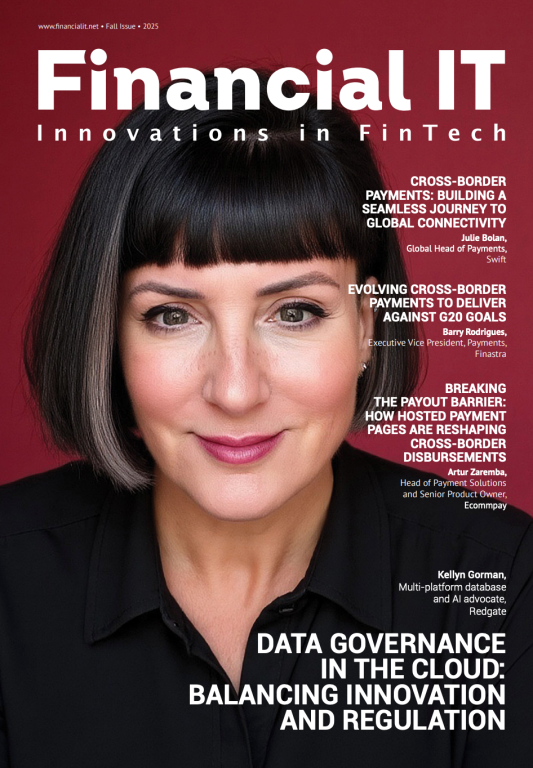Unlocking Instant Liquidity Without Sacrificing Privacy

- Jason Delabays, Ecosystem Lead at Zama
- 31.03.2025 12:00 pm #InstantLiquidity #PrivacyProtection
As many on the investment side of the financial industry are aware, liquidity is an ongoing challenge for those looking to unlock the value of their assets - without selling their shares or risking tax consequences and market disruptions, that is.
For a long time now, collateralised stock loans (CSLs) have offered a solution. For example, entrepreneurs who hold equity in their companies but cannot sell their stock often rely on CSLs to finance their day-to-day spending, using their shares as collateral to access liquidity without giving up ownership. It’s a concept that dates all the way back to the 19th century, when we first saw the development of stock exchanges and margin lending.
However, over the years, we’ve seen traditional financial systems face a number of challenges when dealing with CSLs; from stock market crashes, which have directly impacted the value of collateral and led to liquidity crises, to broader issues, including:
Operational inefficiencies: Another major hurdle is the reliance on intermediaries such as brokers and clearinghouses, which not only introduce friction but also increase costs.
Regulatory inefficiencies: Compliance with AML (Anti-Money Laundering), KYC (Know Your Customer), Basel III capital requirements, and SEC or EU regulations all create a huge administrative burden, increasing the time and cost of processing CSLs.
Settlement delays: While public stock loans typically settle on a T+2 basis, in cases of high-volume trading or market volatility, processing delays can extend further.
If the above wasn’t challenging enough, for private securities, which are far less standardised than public stocks, these issues are often even more pronounced. Unlike public markets - where stock lending and trading follow a clear, liquid process - private securities often require much more extensive legal and administrative work to transfer or collateralise. It’s a drawn out, inefficient process that slows down transactions and drives up costs even more. In fact, investors often face exit fees of 1% to 3% or more, typically in mutual funds, when attempting to move securities between brokers or liquidate their investments.
Enter blockchain technology
Despite the above challenges, CSLs are still used today to access liquidity. But, with the rise of blockchain technology, this is one of a handful of areas set to change. Here, stablecoins have emerged as a major use case, enabling more efficient and transparent collateralised lending by allowing assets to be tokenised and used as collateral on-chain.
Blockchain, especially when combined with tokenisation, can streamline and automate the processes that traditional financial systems struggle with.
One key benefit is faster settlement times, as everything runs on the same financial backend: the blockchain. Instead of waiting days or weeks for transactions to clear, blockchain enables instant/near-instant settlements through smart contracts. These smart contracts can also enforce compliance automatically, ensuring AML/KYC rules are met before a loan is executed, while tokenised stock loans can be settled on-chain without intermediaries, removing any bottlenecks previously caused by clearinghouses. The bottom line, blockchain has the power to completely change CSLs by making transactions faster, more secure, and automated, while reducing delays, inefficiencies, and counterparty risks. That being said, while this all sounds positive, a number of key hurdles still exist before widespread implementation is possible.
Barriers to adoption
Aside from the fact that financial institutions are - perhaps understandably - hesitant to lose power over their customer relationships (because blockchain reduces reliance on traditional banking intermediaries), one of the main hurdles we’re seeing is privacy and finding the right balance between transparency and confidentiality.
While one of the main characteristics of blockchain is that everything is public, creating a transparency issue that can jeopardise the privacy of key users’ information, auditability remains essential.
This causes two main issues. Firstly, while blockchains themselves are incredibly secure when smart contracts are written properly, unfortunately a lot of smart contracts are poorly designed, which is where new cybersecurity risks, such as hacks, oracle attacks, and smart contract vulnerabilities, come into play. Despite this not being a failure of the blockchain itself, it’s still affecting confidence.
Secondly, because transparent data is not adapted to financial markets, excessive visibility of transactions and holdings poses a competitive risk. Most financial actions require a level of secrecy, as confidentiality is fundamental to how the industry operates today. Imagine, for example, a firm is collateralising large stock positions, public blockchain records could expose their trading strategies to competitors, leading to potential front-running or market manipulation, which again is certainly a worry for many.
Then we have to weigh up the fact that regulatory bodies require some level of transparency to ensure compliance with financial laws, and regulatory bodies themselves are showing a lot of hesitation around blockchain. We’re starting to see some progress here, but it’s slow. The EU, for example, started a seven-year DLT Pilot Regime back in 2023 to assess the risks before widespread adoption, but it has largely failed to gain traction. In fact, financial organisations have shown little interest, often preferring their own local regulations, which are typically better suited to their needs - highlighting the ongoing regulatory hurdles that slow adoption rather than enable it.
Privacy-preserving technologies
The upside of all this is that privacy on the blockchain infrastructure can already be improved. In fact, there are a number of technologies already widely used to improve privacy onchain - for example Multi-Party Computation (MPC) and Zero-Knowledge Proofs (ZKPs) - though they do present some limitations. With MPCs, data is split and shared among multiple parties, which increases the risk of exposure if one party is compromised, while ZKPs add a lot of complexity. They have limited flexibility for complex computations, which means stock loan assessments would still require off-chain processing, again potentially exposing sensitive data.
Fully Homomorphic Encryption (FHE), on the other hand, is a cryptographic technique showing real promise, as it enables you to process data blindly without having to decrypt it. This ability opens the door to ‘compliant confidentiality’, meaning it allows:
-investors to secure loans against tokenized stock without revealing their full financial history or holdings - for example, a lender could assess a borrower’s creditworthiness and stock collateral value without ever seeing the raw financial data, reducing risks of information leaks.
loan terms to be computed on encrypted data, allowing confidential price discovery and negotiations, and preventing market manipulation.
regulators to audit encrypted data when necessary to meet compliance requirements while preserving data confidentiality. Regulators can still decrypt and audit data if required, but routine transactions remain private.
Adoption at scale
FHE alone certainly enables confidential transactions and computations on encrypted data, but privacy-enhancing tools like this one must be accessible and easy to implement within blockchain ecosystems if we want financial institutions to adopt them at scale.
With this in mind, blockchain-based CSLs would require decentralised applications (dApps) that can integrate privacy features seamlessly. Progress on this front is also underway, with new and emerging protocols such as fhEVM providing the developer-friendly infrastructure needed to build privacy-preserving lending, settlement, and collateral management systems directly on blockchain.
The future of CSLs
As of now, blockchain has already demonstrated its ability to remove inefficiencies, speed up settlement, and reduce reliance on intermediaries, but at the end of the day widespread adoption will hinge on solving the challenges around privacy and accessibility.
I believe, with the right blend of encryption, decentralisation, and regulatory collaboration, blockchain-based CSLs could soon become the default standard for unlocking liquidity - without sacrificing privacy, efficiency, or trust.




















